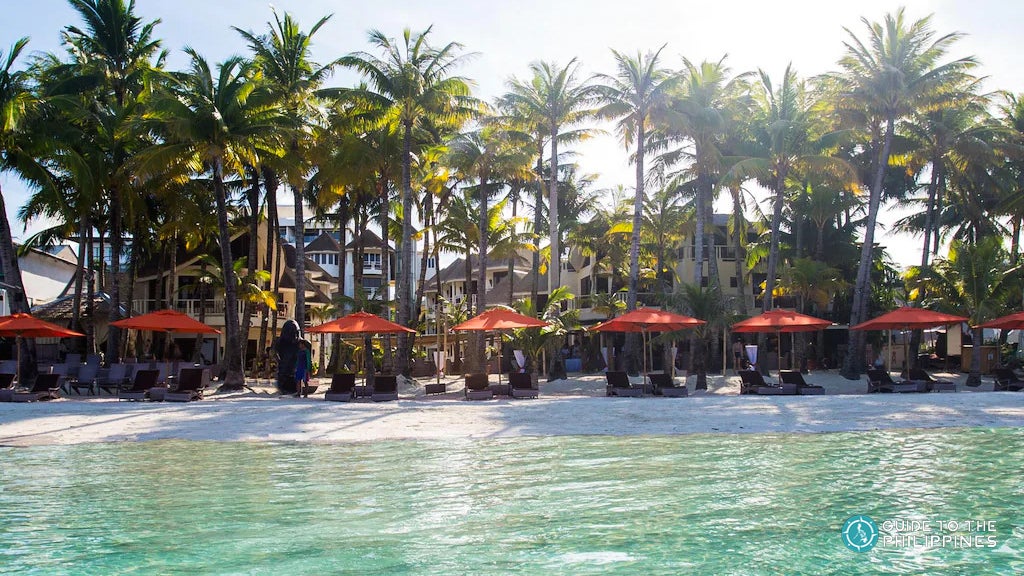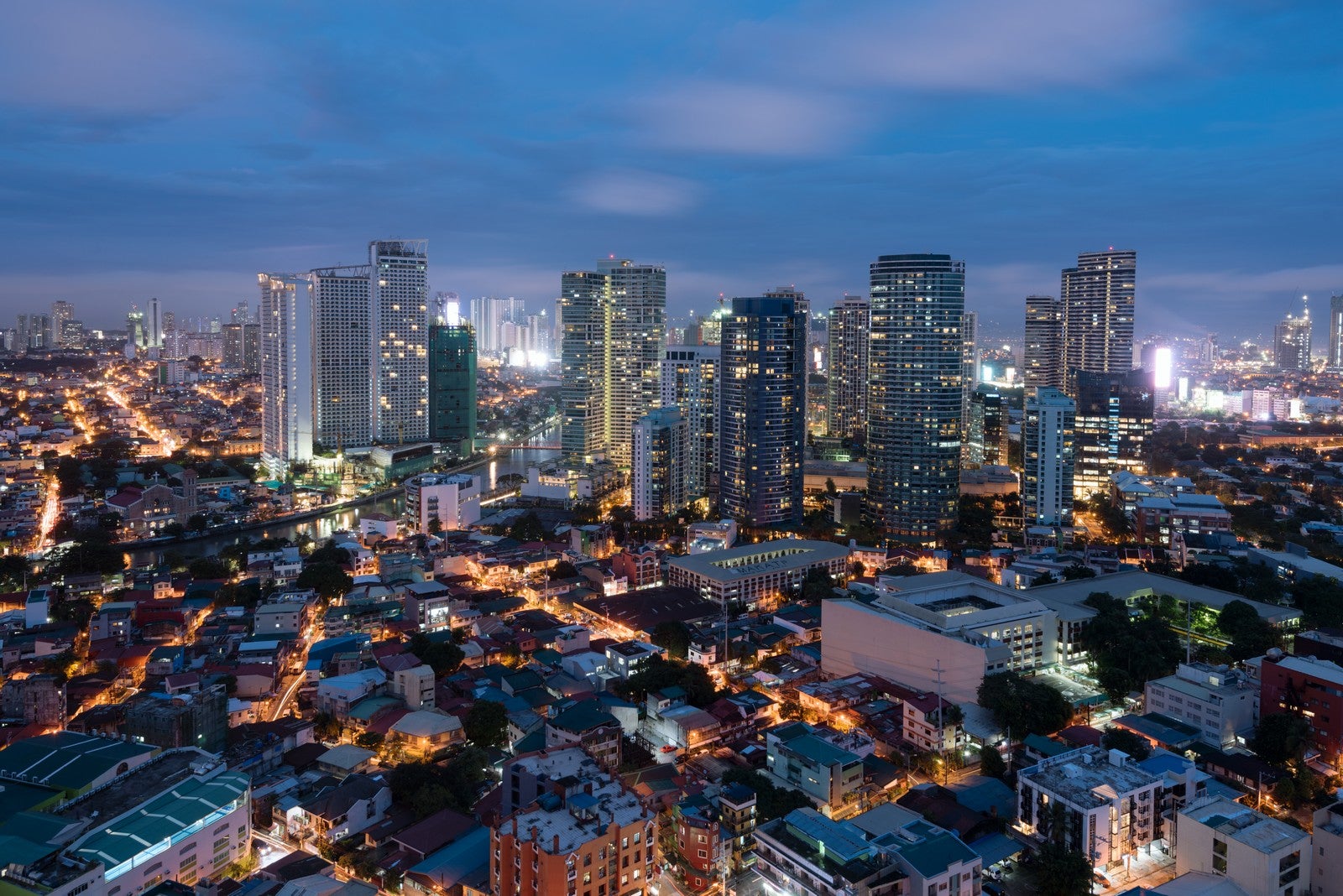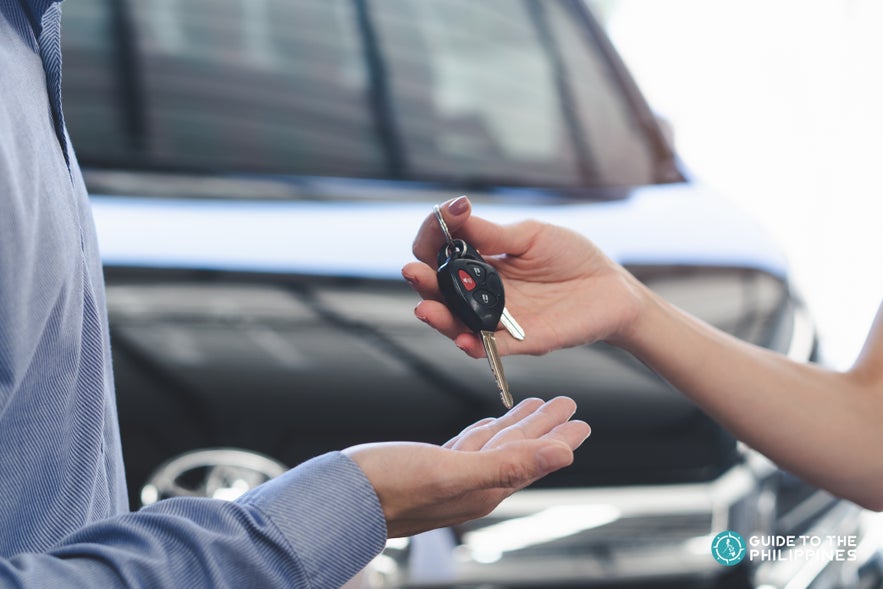
If you're traveling to Manila, Philippines and want to explore the city and nearby attractions at your own pace, booking a Manila car rental is perfect for you. Find out everything you need to know about renting a car in Manila in this article. Learn about the benefits of renting a car when in Manila, the best car rental vehicles to choose, the requirements to prepare, and driving tips.
Manila, the capital city of the Philippines, is one of the main gateways to other top destinations in the country like Boracay, Palawan, and Siargao. Flights fly in and out daily of Manila Airport or the terminals of Ninoy Aquino International Airport (NAIA), welcoming tens and thousands of visitors regularly.
Manila is located in the island region of Luzon, making it the perfect jump-off point for other top destinations that can be reached by land travel like Tagaytay, Batangas, Baguio, Ilocos, and Bicol.
Take note that Manila can also refer to Metro Manila, a blanket term for the country’s highly urbanized metropolitan area in the National Capital Region (NCR) which covers other cities like Makati, Pasay, Quezon City, and more.
Getting around Manila and going to other drivable destinations in Luzon from the sprawling metropolis can be difficult for first-time visitors and tourists. While public transport is available, it can be complex and rather confusing. This is why opting for a car rental in Manila has become a popular and smart choice for travelers.
Read on to find out everything you need to know when renting a car in Manila:
Why Should You Rent a Car in Manila, Philippines?
There are many reasons why booking a self-drive car rental in the Philippines can be a smart and fitting travel decision for travelers. Here are some of the reasons why you should consider car rentals when traveling in and around Manila:
Hassle-free Transportation
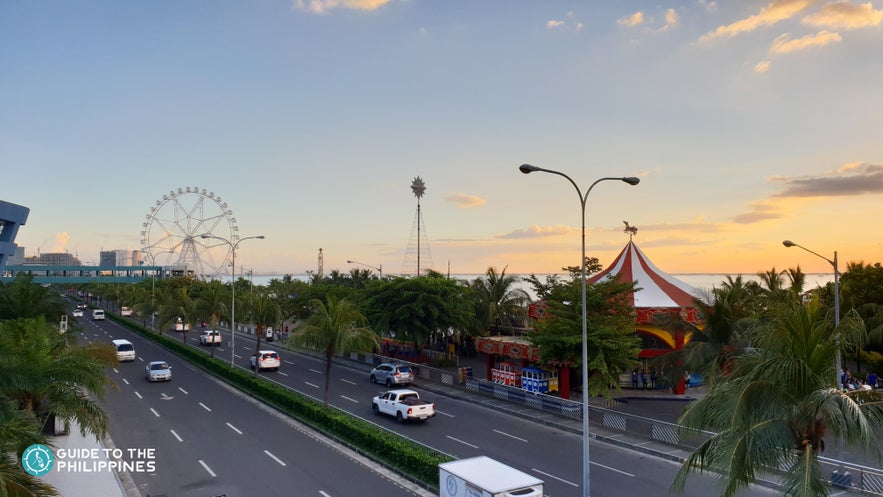
Manila is huge as it’s made up of several interconnected cities. If you’re not living here, it will take time to understand and get used to public transportation. Some public vehicles operate within the limits of a city, while others follow set intercity routes. Distinguishing one from the other for a non-resident can be very challenging.
Traveling to several destinations within the metropolis and beyond will most likely mean taking more than one public vehicle. If you’re bringing luggage and other things, you’ll need to drag all of them while transferring from one transport to another.
Renting a car in Manila eliminates all this hassle and potential headache. Having your own vehicle where you can safely store your luggage and other valuables while on road trips is arguably more convenient. Furthermore, if you choose to rent a car while in Manila, you can easily pick up the vehicle right from the airport upon your arrival.
Comfortable Even During Manila Traffic Jams
Heavy traffic jams have become a norm in Manila. It’s nearly impossible not to get into at least one while going around the metro. Being in a comfortable vehicle while caught in a jam makes a big difference.
Compared to buses or your average Manila taxi, car rentals from reputable companies are newer models with comfortable seats and most importantly, efficient air-conditioning.
Relatively Faster Travel Time
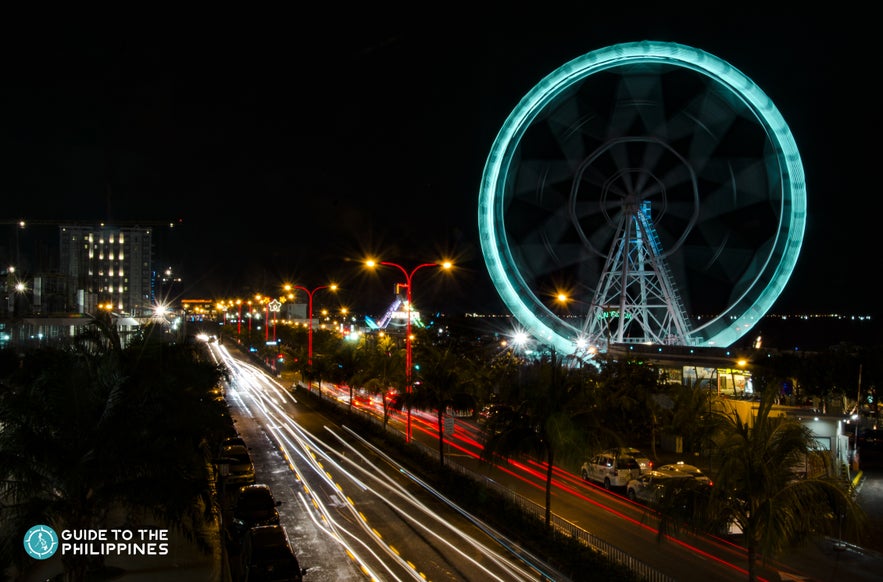
Public utility vehicles in Manila typically follow set routes, and they rarely deviate from them despite heavy traffic. Due to this limitation, driving a rented vehicle can offer a relatively faster travel time.
With a Manila car rental, you’re free to choose faster alternative routes or go through expressways to cut down travel time.
Explore More of Manila
Driving a rented vehicle gives you the freedom to explore Manila at your own pace. You don’t need to adjust your itinerary around bus or tour schedules.
This flexibility is especially handy if you’re planning to do intercity travels to explore Manila's tourist spots. For example, you can leave Quezon City (north of the metropolis) and head to Alabang (south of the metropolis) at any time.
A rental car can also get you to a relatively unknown spot, which can be outside of the usual tourist or tour trail.
Discover Nearby Destinations Outside of Manila
Another advantage of driving a rented vehicle is the opportunity to discover nearby road trip destinations outside of Manila whenever you want to. If you have a rented car for a couple of weeks, you can easily go on a road trip on any day and visit popular places like Batangas, Tagaytay, and Cavite.
Best Jumpoff Points for Car Rental in Manila, Philippines
When deciding to rent a car in Manila, one thing to look into is the available jumpoff locations of the rented vehicle.
In general, Manila car rental pick-up and drop-off points in the metro vary depending on the service provider. Before booking, check the jumpoff locations of your chosen Manila car rental service. If you already have a preferred Manila location, you need to choose the rental provider that has a branch in this location.
Manila Airport
Most established and best Manila car rental providers offer pick-up and drop-off points at the terminals of the Ninoy Aquino International Airport (NAIA). If you opt to pick up the car at the airport, make sure to ask the provider which terminal their office is located. NAIA has three terminals (Terminal 1, Terminal 2, and Terminal 3 ) in Pasay and Parañaque City.
Major Cities in Manila
Aside from the airport terminals, car rental companies also have branches spread across the major cities within Metro Manila. These cities are Makati, Pasay, Quezon City, and BGC (Bonifacio Global City).
These cities make ideal car rental jump-off points because they are tourist-friendly and have relatively good infrastructure and road networks.
We recommend getting a Manila accommodation like serviced apartments in Metro Manila in where you will pick up and drop off your rented car. This will make your rental experience easier and more convenient.
Best Type of Car to Rent in Manila, Philippines
When it comes to car types and brands, Manila car rental providers offer several options. Generally, the vehicle size and models directly affect the final rental fee. But because there is a wide range of choices, you will most likely find the most suitable cars to rent in the Philippines within your budget and needs.
Car brands and models available for rental in Manila are the ones widely used in countries within the Southeast Asian region.
Budget Small Cars and Luxury Cars
Budget car rentals in the Philippines have relatively smaller engines and limited luggage space, but they are affordable and easy to park. The most popular budget small car models in Manila include Mitsubishi Mirage, Toyota Altis, Honda City, Nissan Sylphy, Toyota Vios, and Toyota Wigo.
If you want to travel in style, companies also offer luxury car rentals in the Philippines like Toyota Camry and Lexus ES350. Both types of rental cars are most ideal for city driving and accommodating a small group.
SUV and Vans
If you want a larger engine and a more spacious interior, then you can book an SUV rental in the Philippines. Some of the popular models available are Chevrolet Trailblazer, Mitsubishi Estrada, and Toyota Fortuner.
Booking a van rental in the Philippines is also an option if you’re traveling with a big group. The most common models include Hyundai Starex, Toyota Innova, and Toyota Hi-Ace.
SUVs and vans offer more cabin space and are great for city driving as well as for out-of-town trips as they are built to travel long distances.
What are the Requirements for Foreigners Renting a Car in Manila, Philippines?

The process of renting a car in Manila is quite straightforward. To start the booking process, you will need a valid driver’s license, a valid passport, and a major credit card like Mastercard, Amex, and Visa.
You have the option to book a car rental online or upon arrival in Manila. However, it’s best to book before arrival for faster processing and pick up. You especially need to book ahead of time during peak travel times to avoid delays.
International travelers don’t need to obtain a Phillippine driver’s license. You can use the driver’s license issued by your country provided you meet the following requirements:
-
Your driver’s license is valid and written in English.
-
You will only be driving in the Philippines for 90 days from the day of your arrival.
If your driver’s license is not in English, you will need to go to your country’s embassy in Manila and ask their assistance to officially translate your license to English.
If you’re planning to drive for more than 90 days, you will have to go to the Land Transportation Office (LTO) to get a local version of your license or get a new Philippine license.
Tips for Driving a Car Rental in Manila, Philippines
Driving around Manila is generally safe and the roads are mostly well-maintained. Like any other country, the Philippines has a set of traffic and driving rules that everyone is expected to follow.
Manila roads are not suitable for fast or aggressive driving. If you’re driving a rented car, make sure to always have your driver’s license, passport, and car rental documents with you. Traffic enforcers and police officers may ask for these documents during routine stops or at checkpoints.
Here are other tips when it comes to driving a car rental in Manila:
Traffic and Rush Hour in Manila
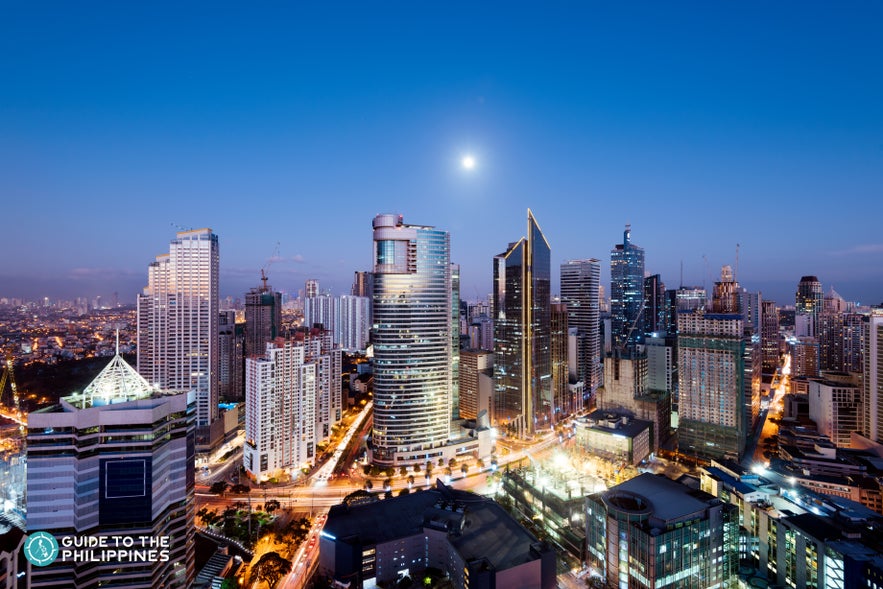
As much as possible, avoid driving during rush hours in Manila. Leaving for your destination minutes before the rush hour will cause delays. Traffic congestion starts from 7 AM to 9 AM when people head to work. Traffic jams start again from 5 PM until 9 PM or when the locals head home.
Number Coding in Metro Manila
To lessen road congestion, most cities in the metropolis enforce a number-coding scheme for vehicles. This plate-number-based scheme prohibits certain cars to be on a road on specific days from 7 am to 8 pm.
The details of the scheme are as follows:
-
Vehicles with plate numbers ending in 1 and 2 can’t be out on Mondays.
-
Vehicles with plate numbers ending in 3 and 4 are not allowed on Tuesdays
-
Vehicles with plate numbers ending in 5 and 6 are restricted on Wednesdays
-
Vehicles with plate numbers ending in 7 and 8 are not allowed on Thursdays
-
Vehicles with plate numbers ending in 9 and 0 are restricted on Friday
Common Road Violations
To avoid trouble with authorities, refrain from doing these common road violations:
-
Speeding up when the light turns orange or yellow
-
Driving the opposite way on a one-way street
-
Driving while intoxicated with alcohol
-
Not wearing seatbelts.
-
Illegal parking and illegal turns
-
Swerving
Getting Pulled Over for Violations
When you get pulled over by a traffic enforcer or police, remain calm and stay in your vehicle until you are told otherwise. You usually need to pull the car on the side of the road. Provide your driver’s license and other necessary documents if the officer asks for them.
The officer will usually explain if you committed a traffic violation. Always speak politely and respectfully. You can always ask questions on how to resolve the issue. If the officer takes your license, inform your rental provider and ask help from your embassy if you’re unsure of what to do next.
Navigation Apps
Navigation apps like Waze and Google Maps work well in the Philippines and they will help you avoid traffic jams and roadblocks. When used correctly, they will effectively cut your travel time so make sure to set them up before driving.
Driving in EDSA
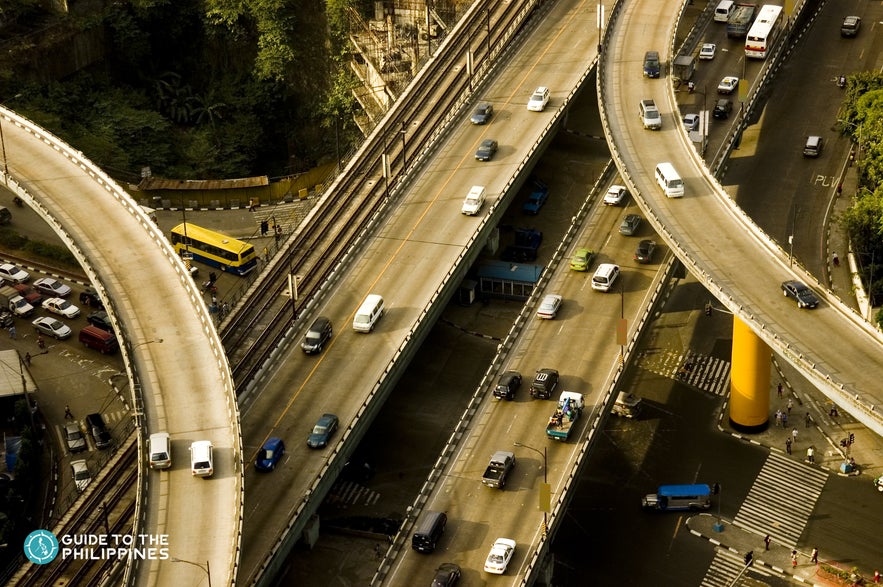
EDSA or Epifanio de los Santos Avenue is a 24-kilometer road connecting several Metro Manila cities from Pasay City to Caloocan City. An estimated 250,000 cars go through EDSA daily. This volume leads to traffic congestion.
Whenever possible, avoid driving through EDSA. If you really must, avoid rush hours and check your navigation app first. Drive cautiously and defensively while on EDSA. Check your side and rear-view mirrors constantly.
EDSA has different yellow lane dividers (1st, 2nd, 3rd). There are lanes intended for private and public vehicles. The policy changes depending on the Metropolitan Manila Development Authority (MMDA) so check with your Manila car rental provider before driving in EDSA. To be safe, always drive along the middle lanes.
RFID and Easytrip for Expressways
Consider using RFID (radio frequency identification) car stickers or tags for faster use of expressways in and around Manila. With this type of car sticker or tag, you don’t have to queue at the toll gate cash lanes. As you drive through the gates, machine readers will automatically charge your account.
Easytrip and Autosweep are two companies that offer these products for specific expressways. You can easily register and prepay an RFID account online. Make sure that your car rental has these features for a hassle-free drive around and outside Manila.
Rent a Car in Manila for a Hassle-Free Vacation
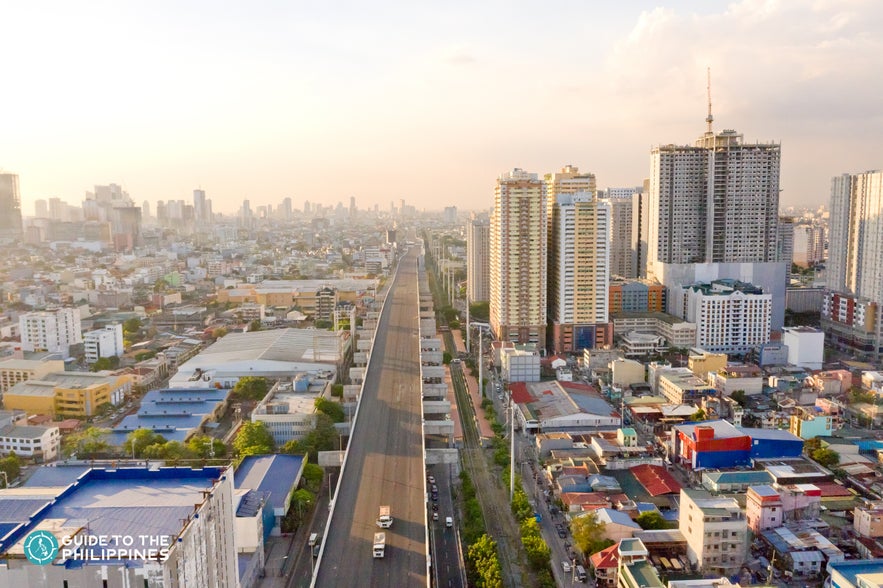
Manila is a fascinating travel destination for travelers visiting the Philippines. The metro is not just the main jump-off point for tourism, it’s also the country’s political seat, commercial center, and economical powerhouse. Renting a car in Manila offers you the freedom, flexibility, and convenience to explore the metropolis. Manila will teach you a lot about Filipino culture, cuisine, and way of life. And by driving a rental car, you’ll be able to experience all of it at your own pace.
You can also rent cars in other places in the Philippines. You may rent a car in Clark Pampanga. Car rental in Cebu and Davao car rental are available for those who want to explore beyond Luzon.



